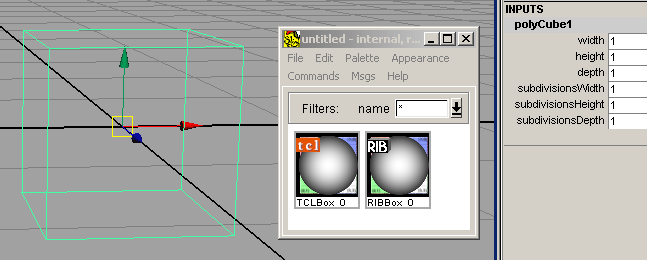Pixar's documentation provides a general description of SLIM's TCLBox. However,
it doesn't give an explicit example of using, say, an "external" Tcl script with
a TCLBox in order to control the generation of RIB from a RIBBox that has been
attached to an object in a Maya scene. This tutorial gives an example of the kind
of work-flow shown on the right.
Suppose you wish to generate an animation consisting
of many expanding spherical clouds of points. Maya's particle system could be used
but if the effects shot requires several dozen clouds each of which consists of hundreds
of thousands of points then clearly the performance of Maya, the animator, the graphics
card and the cpu are going to deteriate.
Using a helper app to
procedurally generate the points when, and only when, prman needs to render each
cloud is far more efficient. Instead of the animator trying to directly manage huge amounts of
on-screen complexity, simple proxy objects can act as surrogates, or "stand-ins", for
each of the clouds. However, for the clouds to be rendered properly accurate values for
the bounding box must be given when the helper app is assigned to the proxy objects.

